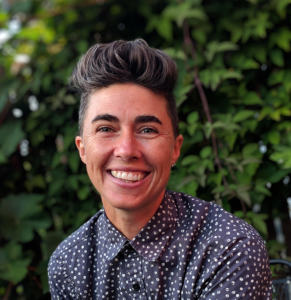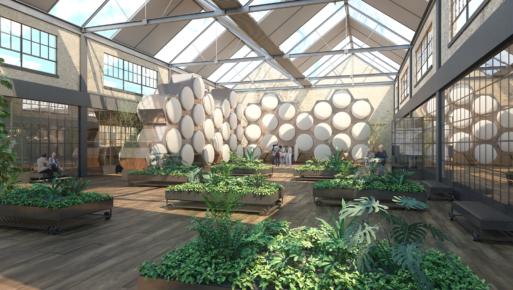Today SevenPonds presents the first in a two part interview with Katrina Spade, the founder and CEO of Recompose. Katrina has been an entrepreneur and designer since 2002. She has over 15 years of experience in project management, finance and architecture, with a focus on human-centered, ecological solutions. While earning her Masters of Architecture, Katrina invented a system to transform the dead into soil, which is now patent-pending. In 2014, she founded the 501c3 Urban Death Project to bring attention to the problem of a toxic, disempowering funeral industry. In 2017, she founded Recompose, a Public Benefit Corporation.
Katrina has a BA in Anthropology from Haverford College and a Masters of Architecture from the University of Massachusetts, Amherst. She has been featured in the Guardian, NPR, Wired, Fast Company, and the NYTimes. She is an Echoing Green Fellow.
Editor’s Note: This interview has been edited for length and readability.
Matt Driscoll: Hi Katrina. Thanks for speaking with us today. Can you start by telling us what Recompose is?

Credit: Craig Willse
Katrina Spade: Recompose is an organization that creates an experience for loved ones after they die. That experience comes in two parts.
The first part is a way to turn bodies into soil after a person dies so their family can grow a tree or bring the soil to their favorite conservation land.
The second part is creating a much more participatory and transparent after-death experience.
We think of recomposition as the urban equivalent to natural burial. It’s a way for people to treat after-death care in a much more conscious way.
Matt: Tell us a bit about yourself and how you got involved in this?
Katrina: I was in graduate school for architecture and I started thinking a lot about my own mortality.
Since starting the project I’ve had several people die who I love dearly. In different ways, each one of those people embodied a good death and a good death experience. That really affirmed this work.
I had also just turned 30, and I had these two young children who are growing up really fast. It made me come face-to-face with my own mortality, realizing the time was going so quickly.
Then, I found out from a friend about this wonderful process that happens where farmers recycle animals to the land. I realized that there’s no reason the process shouldn’t be redesigned for humans.
At first I thought my friends and family were humoring me by telling me it was a great idea, but I began to learn that there are lots of people around the world who are interested in it.
I received a fellowship from Echoing Green, which is an organization that helps with early stage ideas. Talking with them about an idea that I thought was pretty radical and having them say, “Yeah this should exist,” and then having them funding me was pretty eye-opening.
A year later in 2015, I put out a Kickstarter campaign and pitched the idea to the world. People backed the idea from all over the place — Australia, the Netherlands, China, Germany, Canada.
Matt: Can you describe how you go about recomposing the body?

Artist’s rendering of a future Recompose Center
Credit: MOLT Studios
Katrina: The basic concept is that we have high carbon materials, and we create a bed of wood chips, alfalfa and straw. The bed is laid inside of a vessel that looks like an extruded hexagon — a hexagon on its side.
On top of that bed of wood chips, alfalfa and straw we lay the body and add more of the same. The mixture of materials actually smells a lot like a freshly mowed field after a rain. It’s actually quite beautiful.
We provide oxygen and basic aeration to that vessel and over the next 30 days the body breaks down. That’s purely thanks to the microbes and the bacteria that are present. Our job is really to create the perfect environment for that work to happen.
Matt: Thirty days seems like a very quick process. Can you tell us how that transformation, including the bones, occurs so quickly?
Katrina: Yes, bones recompose as well. In a natural burial, how fast fast a body decomposes depends entirely on how much nitrogen and oxygen are in the soil. It also depends on moisture, the amount of clay versus sand, and all of the things you might turn up if you dig a hole somewhere.
For example, if you’re in the southwest you would have basically no decomposition. Instead you’d have drying and mummification. But if you’re in the hills of North Carolina, you might have a situation where the body breaks down pretty quickly. But it still would likely take something like a year. There simply isn’t that much oxygen under the ground. We create the perfect mix of materials in terms of carbon and nitrogen.
There’s also a microbial community working at temperatures of around 120 to 160 degrees Fahrenheit. That’s an incredibly high heat which lends itself to this recomposition process.
This concludes part one of our interview with Katrina Spade. Be sure to join us next week for part two.

 What Is Recompose?
What Is Recompose?


 Debating Medical Aid in Dying
Debating Medical Aid in Dying
 “Help Me, Helen”
“Help Me, Helen”















